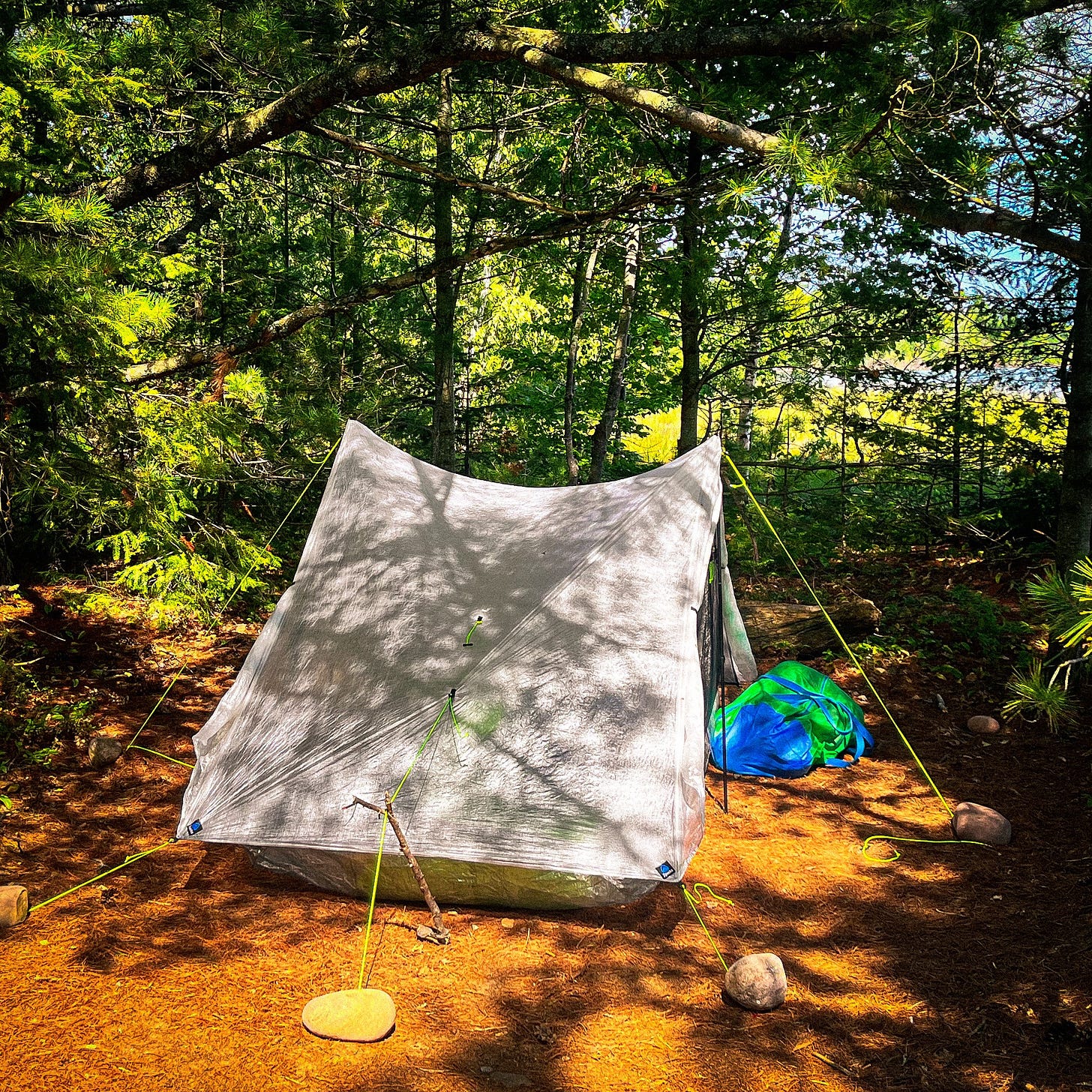The Big Three - Shelter
As I immersed myself in Reddit I came across the term “The big three”, this represents the heaviest items on your back, comprising your shelter, sleeping system, and backpack. Each can vary greatly in weight and functionality, as well as price. One of the ironies or ultralight equipment is the more you pay the less (weight) you get. There are people focused on the not just lightening their load but lightening the cost too. I was more interested in quality than cost in most of my decision making. As I progressed along this journey as my pack got lighter so did my wallet.
Shelter
Ultralight shelters range for cowboy camping under a Tyvek sheet up to stand alone multi-person tents. I already owned what is considered one of the current premier thru-hiker shelter, the Zpacks Duplex.

Tent
The Duplex is a 2-person, single wall, hiking pole tent, constructed of DCF (Dyneema® Composite Fabric, UHMwPE or Cuban Fiber are other names for this material). DCF is, an ultralight, very strong fabric that is also very water resistant. Two downsides of DCF are its low abrasion and puncture resistance and high pack volume. In my limited experience of using the Duplex tent near lakes I found condensation wetting out the foot of my quilt an issue. There are multiple resolutions for this: Improving ventilation (leaving doors open), camping away from water sources, covering your quilt foot with a raincoat, sleeping on the diagonal. Or, as I later learned, upgrade to the DupleXL which has additional six inches of length and keeps you just far enough away from the walls to make the condensation less problematic. I came by way of a DupleXL through another discovery the sub-reddit r/ULgeartrade, this is a wonderful resource for people looking to trade used gear, I was able to sell my Duplex and purchase a DupleXL within a matter of minutes, and subsequently went on the buy and sell a significant amount of equipment though this means.
Hammock
At this point I imagine you think I have chosen the DupleXL as my shelter and ready to move on, but no.... Instead, I decided to pursue an ultra-light hammock shelter. Why? Quality of sleep. On my last "expedition" a circumnavigation of Isle Royal I found it very difficult to get a good night’s sleep on the ground. I had circulation, and nerve compression issues in my arms and shoulders (I am a side sleeper on the ground). I tried wider pads, support under my arms, changing pillows, all to no avail. Previously I had been on a few trips using a Hennessey Hammock system and had recollections of some of the best sleep. My Hennessey was by no means ultra light, weighing in at 3lbs (or 1260g), of course Reddit to the rescue (do you see a theme here?) r/ULHammocking plus the ubiquitous HammockForums.net both provided ample suggestions on ways to go UL. Most people have the misconception that Hammocks are much heavier than tents, and while in the absolute extreme that is true, there are ways to get a hammock shelter very close to on par with tents.
I chose a Trailheadz Banshee UL Hammock, this is a 10'6" hammock with an integrated bug-net (single sided 3/4 zip) and weighs in at 11.5oz (or 326g). I paired the hammock with a Hammock Gear DCF Standard Tarp with doors, weighing in at 7.3oz (or 206g). I could go much lighter on the tarp, but I have found that having extra space during rainstorms makes the whole experience that much more palatable.
Hammocks need suspension systems, and I chose the simplest using 15' DCF tree straps, from DutchWare. These weigh 1.5g per feet and are ridiculously light. Total weight 1.6oz (or 45g). I tie to tree straps to the Hammock's continuous loops using Beckett hitches.
The tarp needs a suspension system too. I use a 50' continuous ridge line of Dyneema, weighing 1.2oz (or 34g) at one end I use a Dutch Hook to loop around the tree onto itself. and at the other end I use a DutchWare Wasp. The tarp also needs tie outs which I again used a total of 50' Dyneema adding another 1.2oz (or 34g). The tarp hardware adds up to a total of 2.5oz (or 71g). The tarp is attached to the ridge line using short lengths of Dyneema (cut from the ridge line) attached via prusuk knots.
The total shelter weight come to 21.3oz (or 603g).
For comparison the DupleXL weighs in at 20.8oz (or 589g) before you add stakes (6 are needed coming in at roughly 2oz or 48g). You can use stakes with a hammock also, for holding out the tarp and also some hammocks have pullout on either side to keep the bug net off your face.
I found the two shelter options very similar weight. But wait, there’s more: Tent and hammock camping differ in the require sleep systems, for example what goes under you. Hammocks require an under-quilt below 70F, and tents require some kind of sleep pad, there are other differences too, next up I will talk sleep systems, quilts v sleeping bags etc.



